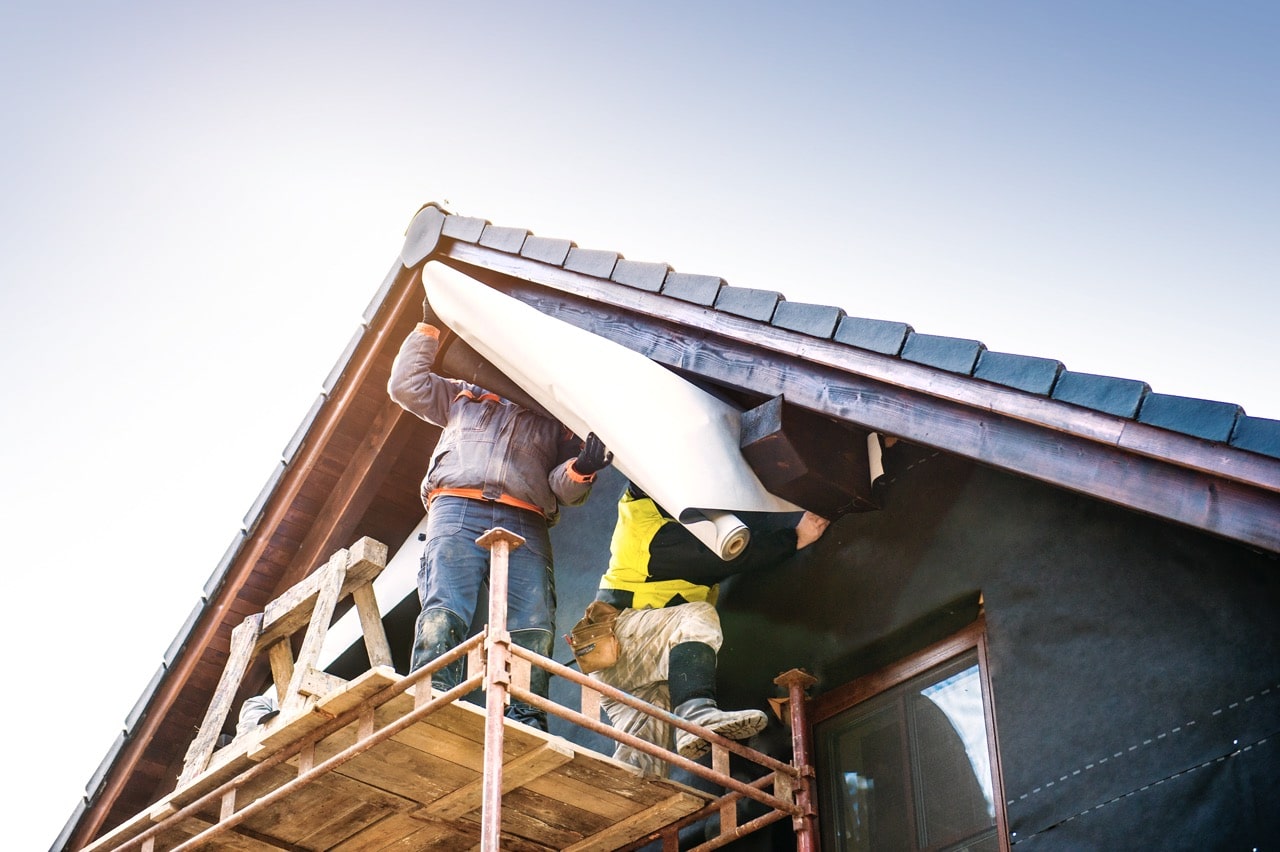16 May 2023
What is the difference between foil and fibreglass insulation materials
Insulation is essential in maintaining a comfortable indoor temperature and saving energy costs when used as a vapour barrier or loft insulation.

Two popular insulation materials are foil and fibreglass. Each has its own unique characteristics, advantages, and disadvantages. This blog post aims to compare and contrast foil and fibreglass insulation, providing insight into what makes each one stand out.
What You Need to Understand about Foil Insulation
Foil insulation is made up of one or more layers of aluminum foil, laminated with plastic or paper, and reinforced with fibreglass mesh. Foil insulation is designed to reflect radiant heat and to provide insulation against convection and conduction. It is commonly used in attics, walls, roofs, and floors.
What about Fibreglass (glass wool) Insulation?
Fibreglass insulation is made up of tiny glass fibers, which are spun into thin strands and woven together to form a mat. It is commonly used in walls, attics, and floors. Fibreglass insulation can be installed using batts or rolls, which are cut to size and fitted between studs, rafters, and joists.
What are the advantages of fibreglass insulation?
One of the advantages of fibreglass insulation is its ability to resist heat flow. It is a great insulator against convection and conduction. It also provides soundproofing, reducing noise from outside or between rooms. Fibreglass insulation is also affordable and widely available.
Fibreglass insulation is also safe to use. It is non-toxic and non-combustible, making it a safe choice for homes. It is also resistant to moisture, preventing the growth of mold and mildew.
What are the disadvantages of fibreglass insulation?
One of the disadvantages of fibreglass insulation is that it can be irritating to the skin and eyes. The small glass fibres can become airborne and cause irritation if inhaled. Fibreglass insulation can also settle over time, reducing its effectiveness.
Another disadvantage of fibreglass insulation is that it can be difficult to install in tight spaces. The batts or rolls must be cut to size and fitted tightly between studs, rafters, and joists. This can be time-consuming and challenging, especially for DIY installations.
What are the advantages of foil insulation?
One of the advantages of aluminium foil insulation is that it is easy to install. It is lightweight and can be easily cut to fit the required size. Reflective foil insulation is also fire-resistant and non-toxic. It is also resistant to moisture and does not promote the growth of mold or mildew.
Another benefit of foil insulation is its ability to reflect heat. It is designed to reflect up to 97% of radiant heat, making it an ideal choice for hot climates. It can help keep a home cool in the summer and warm in the winter.
What are the disadvantages of foil insulation?
One of the disadvantages of foil insulation is that it is not as effective against convection and conduction as it is against radiant heat. Foil insulation can also be more expensive than other types of insulation.
Another disadvantage of foil insulation is its susceptibility to tearing. If the insulation is not handled carefully, it can tear easily, reducing its effectiveness.
Frequently Asked Questions
Which has better thermal insulation properties?
When comparing the thermal insulation properties of foil and fibreglass insulation, it is important to consider the specific type and thickness of insulation being used. Both materials have their own unique characteristics that make them effective insulators in different ways.
Foil insulation is designed to reflect radiant heat making it a good choice for reducing heat gain in the summer. However, it may not provide as much insulation against convection and conduction as other materials.
Fibreglass insulation, on the other hand, is designed to resist heat flow and can be effective against convection and conduction.
It can also provide soundproofing and is widely used in walls, loft insulation, and floors. Fibreglass insulation is available in varying thicknesses and densities, with higher R-values indicating greater insulation properties.
Ultimately, the best choice for insulation will depend on the specific needs and circumstances of the building being insulated. It is recommended to consult with a professional insulation contractor to determine the best material and thickness for your specific needs.
How to cut fibreglass batts?
Fibreglass insulation can be easily cut and shaped using a sharp utility knife. It is one of the simplest insulation materials to work with, and some rolls are already perforated to the required size.
To cut fibreglass insulation, mark it with the necessary measurements, wear protective gear such as gloves and eye protection, and carefully cut along the lines using enough pressure to cut through the thickness of the material. Multiple cuts may be necessary for thicker insulation.
What thicknesses are they available in?
Foil insulation is available in different thicknesses, ranging from 3mm to 25mm. The thicker the insulation, the higher the R-value, which indicates the insulation’s ability to resist heat flow. Foil insulation with a higher R-value is more effective at insulating against heat loss or gain.
Glass wool insulation is also available in different thicknesses, ranging from 3.5 inches to 12 inches. The thicker the insulation, the higher the R-value. Fiberglass insulation with a higher R-value is more effective at insulating against heat loss or gain.
Is fibreglass insulation safe?
Fibreglass insulation is considered safe when installed properly and used in accordance with manufacturer instructions. It has been used as a popular insulation material for decades and has a long-standing record of safety.
However, fibreglass insulation can be irritating to the skin, eyes, and respiratory system if the fibres become airborne and are inhaled. To minimize the risk of irritation, it is recommended to wear appropriate personal protective equipment – wear gloves, long-sleeved clothing, and a respirator mask, when handling fibreglass insulation.
Overall, fibreglass insulation is considered safe when installed properly and used in accordance with manufacturer instructions.
Conclusion
Foil and fibreglass insulation have their own unique characteristics, advantages, and disadvantages. Foil insulation is designed to reflect radiant heat and is easy to install, fire-resistant, and resistant to moisture.
It is ideal for hot climates and can help maintain a comfortable indoor temperature. However, it may not be as effective against convection and conduction and can be more expensive.
On the other hand, fibreglass insulation is made up of tiny glass fibres and is a great insulator against convection and conduction. It also provides soundproofing, is affordable, and widely available. However, it can be irritating to the skin and eyes, settle over time, and can be challenging to install in tight spaces.
Both materials are available in different thicknesses, with higher R-values indicating a greater ability to resist heat flow.
Ultimately, the choice between foil and fibreglass insulation will depend on the specific needs of your home or building. Consider factors such as climate, budget, ease of installation, and health and safety concerns when making your decision.
It is important to ensure that the insulation is installed correctly to maximize its effectiveness. Improper installation can lead to gaps and reduce its ability to provide insulation. It is always recommended to consult with a professional insulation contractor to ensure that the insulation is installed correctly and safely.
In conclusion, both foil and glass fibre insulation have their advantages and disadvantages. It is important to weigh the pros and cons and choose the material that best suits your needs. Proper installation is key to maximizing the insulation’s effectiveness and saving energy costs in the long run.


